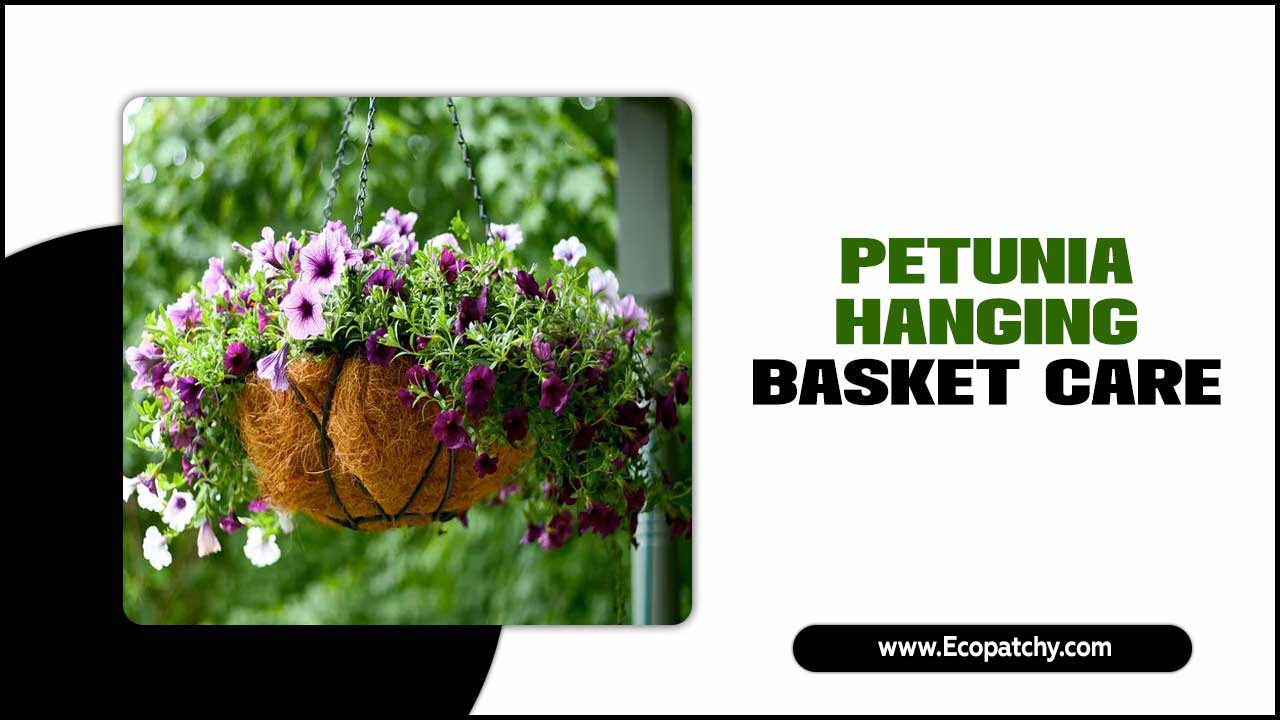Petunias are popular for many gardeners due to their vibrant colours and long blooming seasons. However, as the summer progresses, the blooms on these beautiful flowers may fade, leaving a less appealing appearance in your garden.
This is where deadheading comes into play. Deadheading removes spent or faded flowers from a plant to encourage new growth and prolong the blooming period. While it may seem simple, there is a proper technique for deadheading petunias that can greatly benefit your plants’ health and overall appearance.
Here, we will discuss the importance of deadheading petunias and provide step-by-step instructions on how to do so properly. Whether you are a novice or a seasoned pro, understanding how to deadhead petunias will keep your garden looking beautiful and promote healthy growth for these popular flowers. So, let’s dive in and learn how to deadhead-petunias and why it’s essential for any petunia lover.

About Deadheading Petunias
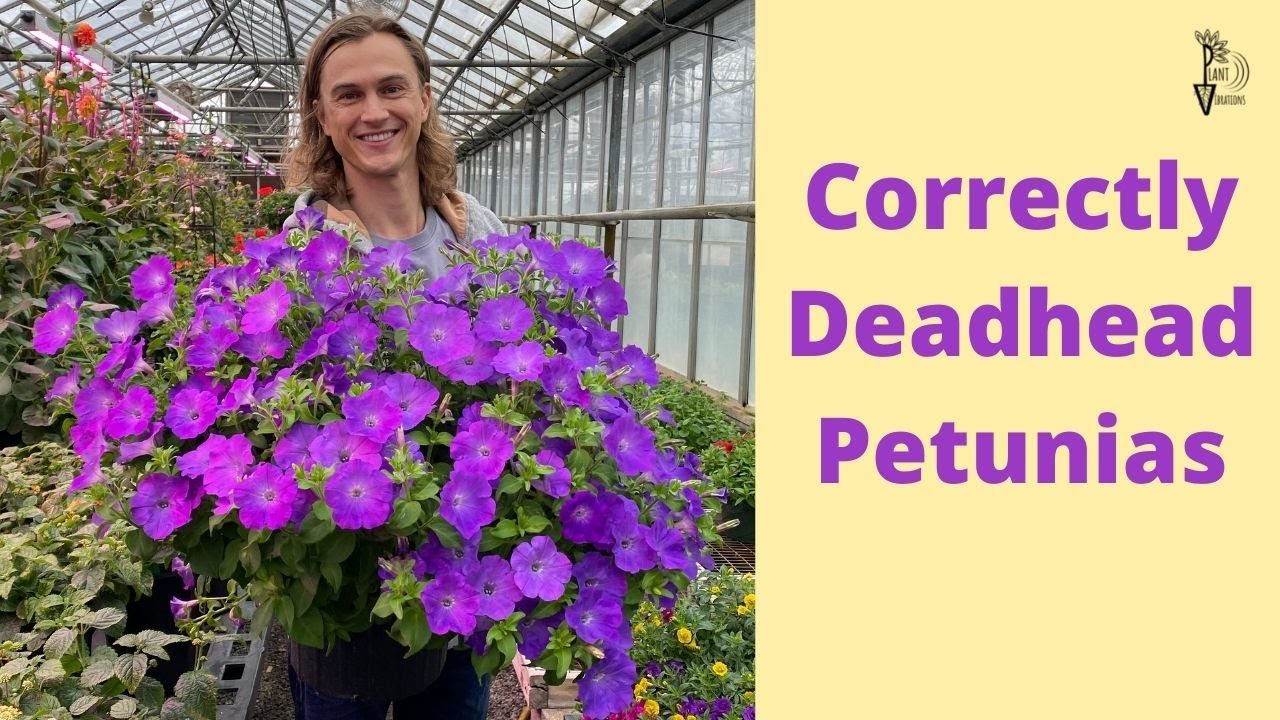
Deadheading petunia is important to keep these beautiful flowers looking their best. Deadheading involves removing the spent or faded flowers from the plant, improving the appearance and encouraging more blooms.
To deadhead petunias, pin the wilted flower just above healthy leaves or buds. This will redirect the plant’s energy towards producing new flowers instead of setting seeds. Deadheading should be done regularly throughout the growing season to promote continuous blooming and keep your petunias looking vibrant and healthy.
Why Deadheading Is Important For Petunias
Deadheading is an important practice for maintaining the health and appearance of petunias. Removing spent flowers or deadheading encourages the plant to produce more blooms and prevents it from putting energy into seed production.
This results in a more vibrant display of flowers throughout the growing season. Deadheading also helps to prevent the plant from becoming leggy or straggly as it redirects nutrients and energy towards new growth.
Additionally, removing dead flowers can help to reduce the risk of disease or pest infestation by eliminating potential breeding grounds. So, if you want your petunias to thrive and bloom all summer, don’t forget to give them a little deadheading TLC.
Tools And Supplies Needed For Deadheading
To properly deadhead petunias, you will need a few tools and supplies. With these tools and supplies, you’ll be well-equipped to keep your petunias looking their best by regularly deadheading them throughout the growing season. Here is a list of what you will need:
- Pruning Shears Or Sharp Scissors: These will cut off the dead or fading flowers.
- Gloves: Wear gloves to protect your hands while gardening is always a good idea.
- Container Or Bucket: This will serve as a place to collect the dead flower heads as you go.
- Watering Can Or Hose: After deadheading, it’s important to give your petunias a good watering to help them recover and encourage new growth.
How To Deadhead Petunias: Best10 Steps
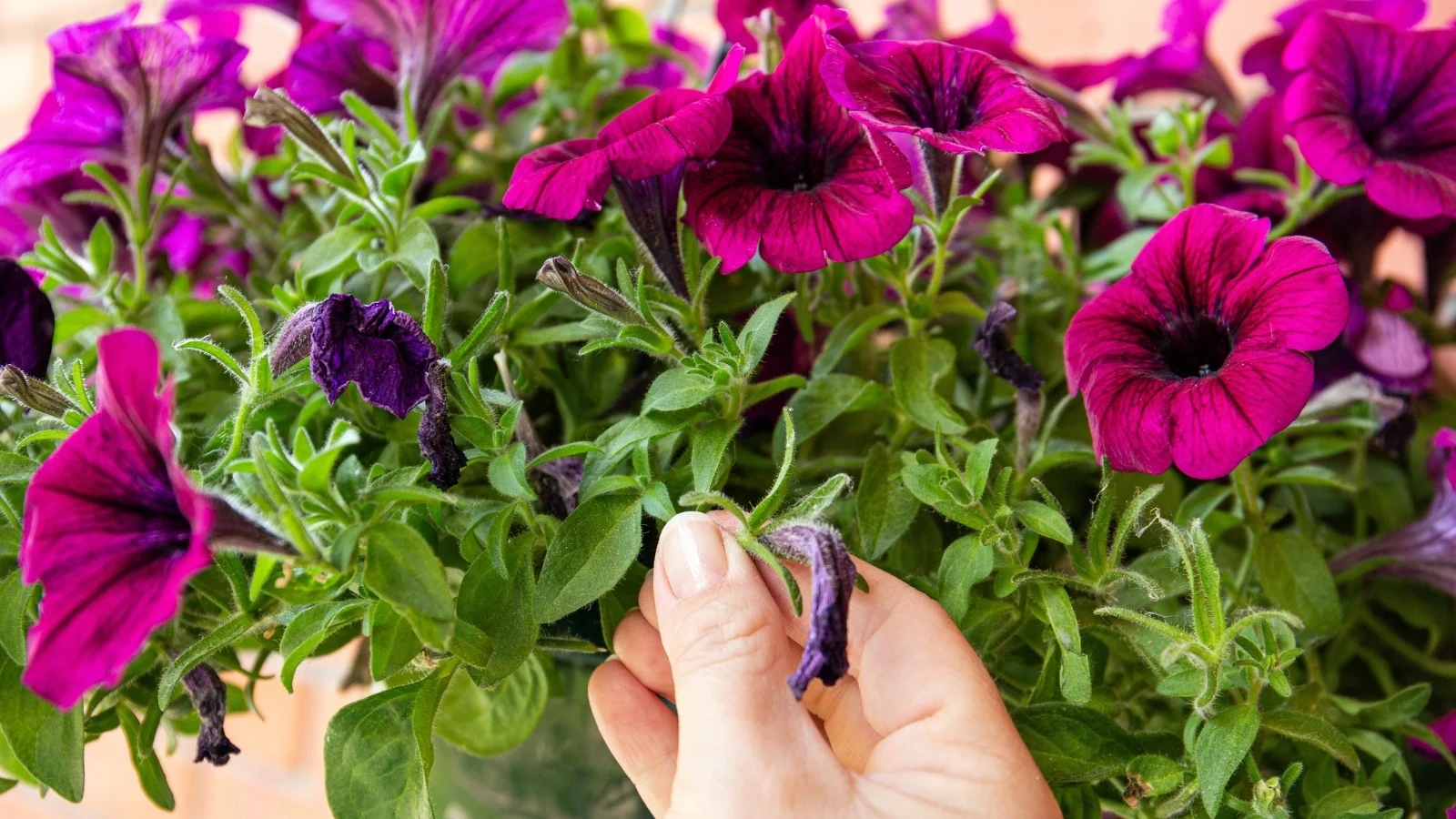
Deadheading petunias is essential to maintain the health and longevity of these beautiful flowering plants. Removing spent blooms encourages continuous blooming and prevents the plant from wasting energy on seed production. Here are ten simple steps to properly know how to deadhead petunias.
1.Understanding The Anatomy Of A Petunia Flower
Petunias, with their vibrant colours and patterns, are popular garden flowers. Understanding the anatomy of a petunia flower is crucial for effective deadheading. Each flower consists of petals, a stem, and a seed pod at the base.
The stem connects the flower head to the main plant, and correctly pinching or pruning it is essential. Removing faded or spent flowers at the base of the flower head and cutting the stem just above a leaf node can encourage new growth. Petunias can enhance any garden with their perfect blooms.
2.Identifying Flowers Ready For Deadheading
To identify flowers ready for deadheading, look for faded or wilted petals to indicate a spent bloom. Petunias with drooping or discoloured flowers are also ready for deadheading. Be sure to remove flowers that have lost their vibrant colour or have started to decay.
Regularly checking your petunias for signs of spent blooms is important to maintain their appearance. By watching for these visual cues, you can ensure that you deadhead petunia plants at the right time, promoting new growth and keeping your petunias looking their best.
3.Removing Faded Or Spent Flowers
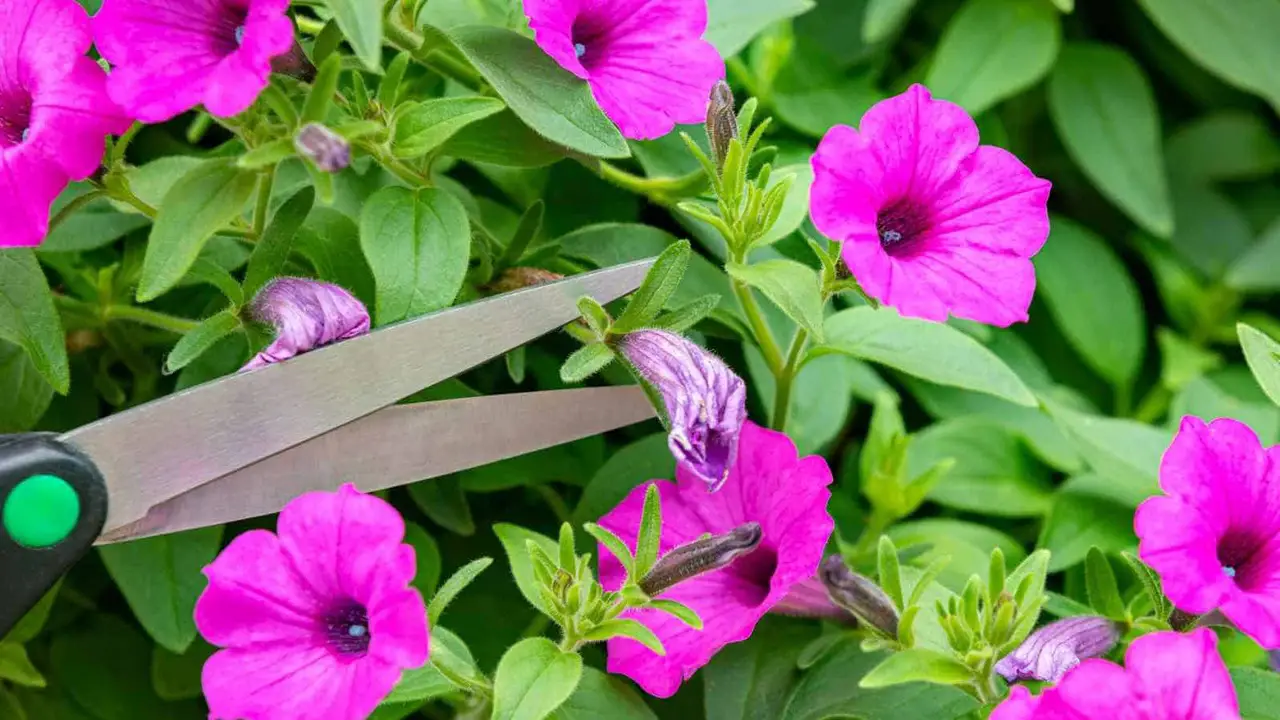
To maintain the overall appearance of your petunias, it’s important to remove faded or spent flowers regularly. Pinch off the dead blossoms from the base of the flower head or use a sharp pair of pruning shears to snip them off. By doing so, you prevent seed production and encourage new bud formation.
Deadheading petunia is a chore that every gardener should do to ensure the perfect flower display. Make sure to deadhead your petunia plants throughout the summer months of July and August, removing any dead blooms or stalks with just a quick snip.
4.Cutting The Stem Properly
To ensure proper healing and growth, it’s important to cut the stem of a petunia just above a leaf node or set of leaves. Make a clean diagonal cut, avoiding cutting too close to the main stem to prevent damage. Properly pruning the stem can redirect the plant’s energy towards new bud production.
This will result in more blooms and healthier growth. Remember, cutting the stem properly is the only way to encourage the petunia plant to produce perfect flowers.
5.Disposing Of Deadheaded Flowers
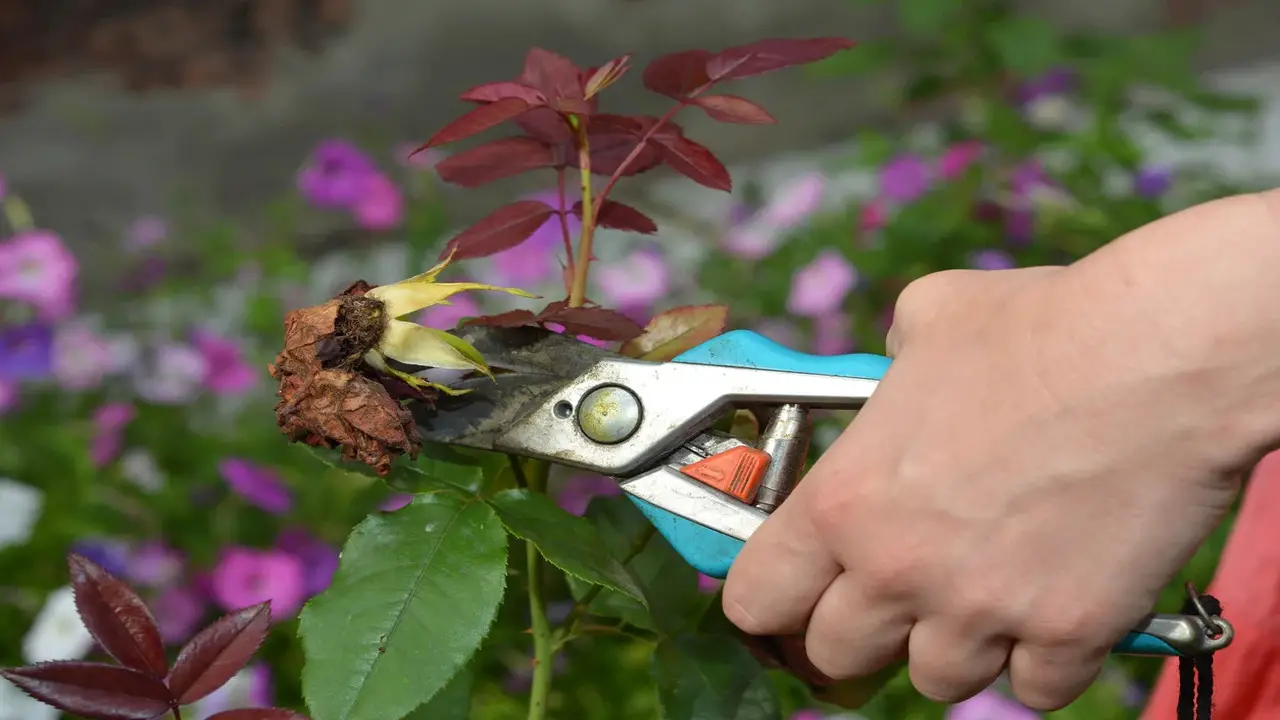
One important aspect of deadheading petunias is properly disposing of the removed flowers. Disposing of deadheaded flowers in a compost bin or pile is best. Composting them helps with waste management and adds valuable organic matter to the soil.
Avoid throwing deadheaded flowers on the ground, as they can attract pests. Proper disposal is crucial for preventing the spread of disease or pests. By taking care of this simple chore, you can ensure that your petunias continue to thrive and bloom throughout the season.
6.Monitoring And Maintaining Petunias
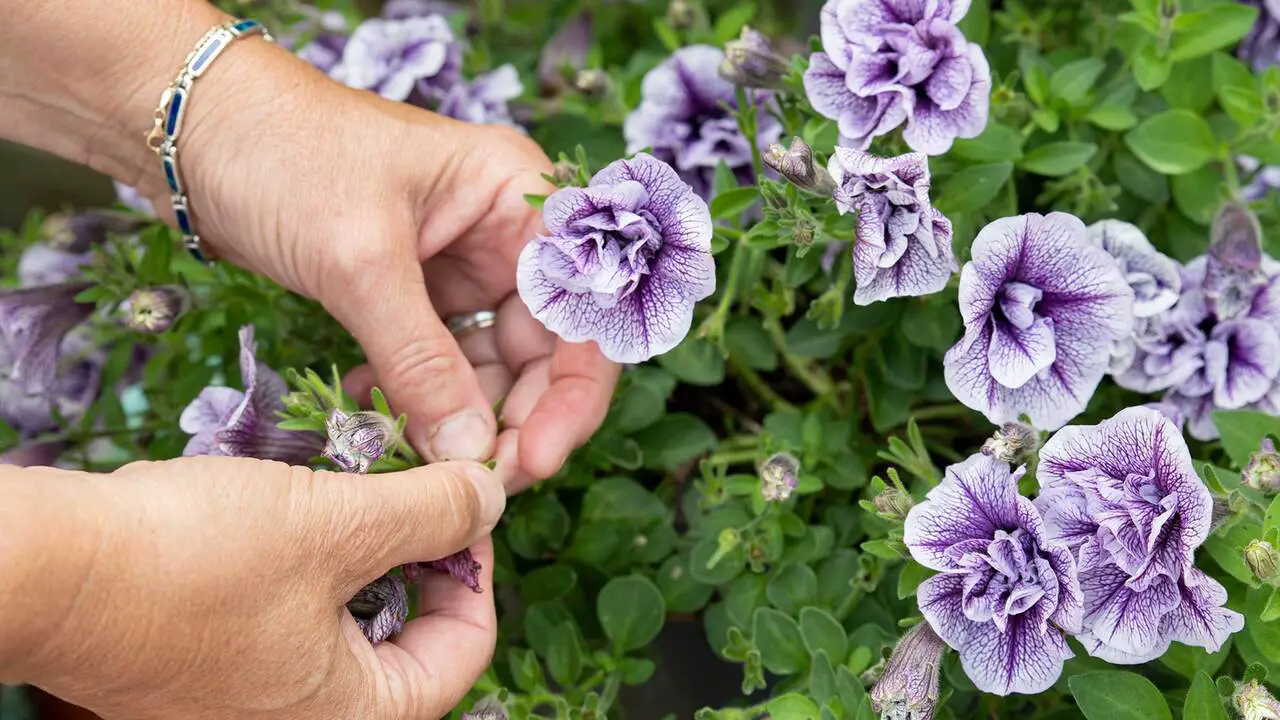
Monitoring and maintaining petunias is essential for keeping them healthy and promoting continuous blooming. Deadheading, or removing faded flowers, is a simple but important task that can encourage the production of new blooms. Here are some steps to help you deadhead your petunias:
- Regularly inspect your petunias for faded or wilted flowers
- Pinch off the dead flower just above the first set of healthy leaves or buds.
- Dispose of the removed flowers to prevent the spreading of diseases or pests.
- Water your petunias regularly to keep them hydrated and promote new growth.
- Fertilize your petunias every few weeks to provide them with necessary nutrients.
Following these steps and monitoring and maintaining your petunias, you can enjoy a season-long display of beautiful, vibrant blooms.
7.Pruning And Shaping Petunias For Maximum Bloom
Regular pruning is essential for promoting new growth and maximizing the bloom of petunias. To maintain their shape and prevent legginess, use sharp pruning shears to trim petunia stems just above a healthy set of leaves. Pinching off spent flowers also redirects the plant’s energy towards new blooms.
Pruning encourages bushier and healthier petunia plants and ensures a more abundant display of flowers. Incorporating regular pruning into your gardening routine is the only way to keep these beautiful flowers at their best throughout the growing season.
8.Preventing Diseases And Pests Through Deadheading
Regularly deadheading petunias keeps them healthy and vibrant and helps prevent disease and pest infestations. Removing spent flowers reduces the risk of diseases and pests that can harm your plants. Deadheading also prevents the formation of seed pods, which can attract pests to your garden.
Additionally, it improves air circulation around the plant, reducing the likelihood of fungal diseases. With regular deadheading, you can minimize the need for chemical pesticides and maintain a beautiful, pest-free petunia garden.
9.Deadheading Petunias In Different Seasons
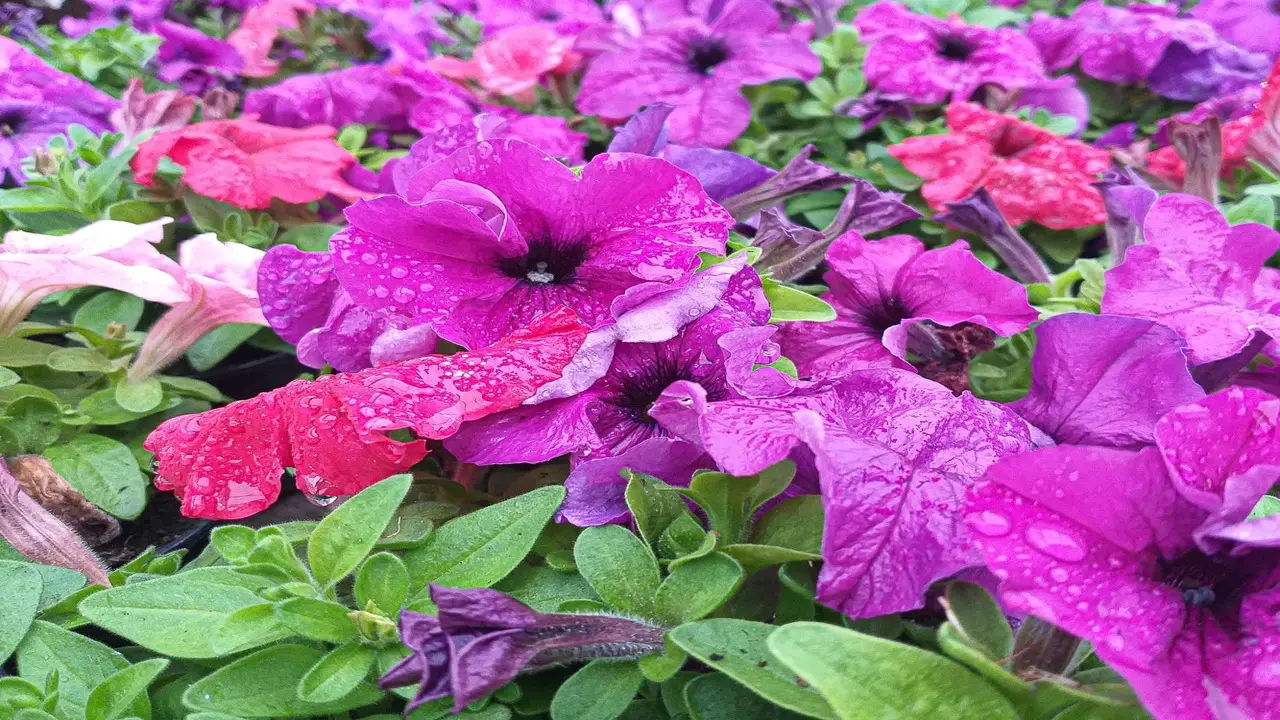
Deadheading petunias throughout the growing season is essential for continuous blooming. In spring, deadhead early-blooming petunias promote new buds and extend the flowering period. Deadhead petunias are used at least once a week to maintain a tidy appearance during summer.
Deadhead petunias remove any remaining spent blooms in the fall before the first frost. Even in winter, deadheading can help keep petunia plants healthy and ready for the next growing season. By following these tips, you can ensure your petunias provide a vibrant display of colour all year round.
10.Enjoying The Benefits Of Deadheading Petunias
Regularly deadheading petunias has numerous benefits that enhance your garden’s overall appearance and health. By removing spent blooms, you not only prolong the blooming period but also encourage the production of more flowers, resulting in a visually stunning display.
Deadheading petunias also allows you to control the size and shape of your plants, creating a more manicured look. Additionally, removing faded blooms enhances the aesthetic appeal of your outdoor space, making it neater and more attractive. Deadheading petunia is a simple task that rewards gardeners with a beautiful and flourishing petunia garden.
Conclusion
Deadheading petunias is a simple yet effective practice that can greatly enhance the beauty and longevity of these vibrant flowers. By regularly removing faded or spent flowers, you not only promote new growth and blooming but also prevent the spread of diseases and pests.
Properly cutting the stems and disposing of the deadheaded flowers are important steps in maintaining the health and appearance of your petunias. Additionally, monitoring and shaping the plants and deadheading them in different seasons contribute to their overall vitality and abundance.
So, embrace the benefits of deadheading petunias and enjoy a stunning display of colourful blooms throughout the growing season. We hope you understand how to deadhead petunias.
Frequently Asked Questions
1.Can You Deadhead Petunias With Scissors?
Ans: Yes, deadheading petunias with scissors is a viable option. Ensure the scissors are clean and sharp to prevent damage. Cut the stem just above healthy leaves or buds. This practice promotes new growth and extends the blooming period.
2.Where Do You Pinch Back Petunias?
Ans: Pinch back petunias at the tips of the stems, just above a set of leaves. This encourages branching and promotes fuller, bushier growth. Regular pinching throughout the growing season maintains the plant’s appearance. Be cautious not to damage or remove too much of the plant during pinching.
3.What Is The Proper Way To Deadhead Wave Petunias?
Ans: To properly deadhead wave petunias, locate the spent bloom at the base of the stem and pinch it off or use pruning shears. Regular deadheading throughout the growing season promotes continuous flowering and prevents energy from being used for seed production. This results in fuller and healthier plants.
4.What Happens If You Don’t Deadhead Petunias?
Ans: If petunias are not deadheaded, the plant’s flower production may decrease. Deadheading helps stimulate new bud growth and extends the flowering season. While petunias will eventually drop their spent flowers on their own, it can drain the plant’s energy. Deadheading is a simple way to keep petunias healthy and vibrant.
5.Is It Necessary To Deadhead Petunias?
Ans: Deadheading petunias is not required, but it can promote more blooms. By removing spent flowers, the plant is encouraged to produce new ones. Neglecting deadheading may cause petunias to become leggy and produce fewer blooms. Additionally, deadheading prevents the plant from going to seed, which can impact its growth.


